The insurance company’s previous president and CEO, Scott Murphy, has split his role and will continue as CEO.
Which Social Media Platforms Are Best for Jewelers?
Likeable Local’s Mike Farrell says that in order to find the answer, jewelers first need to ask themselves two other questions.

Whether you’re just starting out or are looking to expand your social presence, there quite a few routes you can take.
Many fall into the trap of trying to tackle every social network at once and wind up spreading their efforts too thin. Especially for small business owners, who are likely already wearing many others hat, using your time efficiently on social media is crucial.
So, on which platforms should you be focusing? In order to properly determine the answer, you first need to ask yourself two questions.
1. What kind of products do you sell? A high-end jeweler is going to have a much different target audience than a casual jewelry store. Different demographics have different frequencies on the various platforms and this will affect your social strategy. Also, consider your intended brand voice because each platform lends itself to a particular style of communication.
2. Additionally, it’s also important to consider what your store’s overall goals are before you begin investing time in social media. One of the biggest mistakes we see a lot of small businesses make on social is to move forward without any real plan in place. Determining the objectives of your marketing efforts helps you decide which platforms to focus on because each platform can best be used for different purposes. Are you trying to grow awareness for your brand online? Are you trying to promote specific offers/sales? Or are you trying to drive followers to your physical location?
Let’s begin with the social media juggernaut, Facebook.
By now, it is almost assumed that everyone has a Facebook profile. More importantly for you, it is also assumed that all businesses are now on Facebook. Maintaining an active presence on the platform is vital because it’s currently the most ubiquitous social network with more than 1.5 billion users.
Facebook has powerful advertising capabilities built right into the platform with the ability to create custom audiences and target by interests and demographics.
Facebook is also very useful because it allows for a variety of different functions such as short-form posting, long-form posting, and photo/video sharing. It encompasses most features of other social networks, making it a popular choice among marketers.
In addition, content on Facebook is less time-sensitive than other platforms such as Twitter and Instagram. However, it is largely pay-to-play if you want your followers to see your posts. Also important to consider with
Next, let’s move onto Instagram, which passed Twitter last year in terms of monthly active users.
The platform boasts one of the highest user engagement rates, making it an effective space to build a brand community. Instagram is an especially great platform for businesses that have products that lend themselves to being showcased visually. Restaurants, jewelers and clothing manufacturers are all examples of businesses with visually appealing products that are perfect for Instagram.
However, don’t limit yourself to just pictures or videos of your jewelry. As beautiful as your products are, the ‘Gram is also a great place to humanize your brand by showing off your company culture. This is especially important on Instagram because users on the platform tend to skew younger and these younger consumers value connecting with brands online. Office shenanigans and behind-the-scenes looks can go a long way in putting a face to your business.
One challenging aspect of Instagram for marketing purposes is that the platform does not support links within posts. You are only allowed one link within your bio, which can make it challenging to redirect followers to content on your website or blog. One way around this is to make use of Instagram ads that redirect to an external website. These ads were originally for larger brands, but have recently become more affordable for smaller businesses.
Twitter has recently been suffering an identity crisis of sorts and its user base has started to stagnate. However, this is not to say it’s alright to start ignoring the platform. Twitter remains a great place to receive small bursts of current information and to connect with industry thought leaders. The platforms lends itself particularly well to reaching out to people you may not fully know yet.
Here at Likeable, we connect with people on Twitter all the time and frequently are able to take conversations with prospects into email or Skype.
Twitter is particularly useful for redirecting to external content and you can insert multiple links into a single tweet. The network also has powerful advertising capabilities with the added bonus of the promoted tweets looking very similar to normal tweets.
If you want to maximize your reach on Twitter, it’s recommended that you make use of ads because the lifespan of tweets is so short. Ads will boost your reach, and the platform even gives you estimates of how many link clicks you will receive based on your ad spend.
Similar to Instagram, Twitter is great for fostering an engaged community around your products. It’s a helpful place to find out what people are saying about your business, your competitors and your industry in general. There are also listening tools to help you gather these insights to make better informed decisions moving forward. Finally, Twitter is often used as a customer service platform because of its real-time nature, so make sure you are responsive.
LinkedIn is an interesting network because its audience is more easily defined than other platforms. Billed as the “network for professionals,” LinkedIn can serve a variety of purposes for both businesses and individuals alike.
One of the most powerful aspects of the platform is its networking capabilities. On LinkedIn it’s possible to connect with and recruit users based on industry and common connections. It’s an especially powerful resource for business-to-business companies and can also be used to establish your thought leadership within an industry.
Similar to Facebook, LinkedIn also has a helpful groups feature that can allow you to have private conversations with thought leaders on trending jewelry topics.
If you are not a business-to-business jeweler, you can still certainly find use for the platform as an individual, but as a business-to-consumer jeweler it might be better to initially stick to other the other platforms previously mentioned.
Snapchat
I’ve already outlined my thoughts on Snapchat, but let’s recap (because it’s my still my favorite platform.)
The platform has quickly moved from the fringe of social media relevance to a legitimate platform where the likes of BMW and Hasbro now frequently advertise. Snapchat has deftly figured a way to include paid advertisements within in its app without disrupting the user experience.
Now, for small business purposes the paid advertisements are not within the realm of financial feasibility. However, this is not to say that small businesses cannot find use for the app.
As of last year, more than 400 million snaps were sent daily. With over 25 million users in the United States alone, there is a good possibility that you may have some potential customers frequently using the app (even more likely if your target demographic is skewed younger.)
Especially with the inclusion of the story and chat features, companies are starting to figure out ways to effectively use Snapchat’s organic reach potential.
Snapchat differs greatly from some of the other platforms here because of its innate casual and time-sensitive nature. More so than any other network Snapchat really allows you to be your authentic self.
Snapchat will be most effective for your business if you have a product that’s interesting to show off visually--which all jewelers do--and if you have a younger customer base.
So, which of these social media platforms have you found most useful as a jeweler and why? Let us know in the comments below or tweet us @LikeableLocal.
Mike Farrell is the community manager at Likeable Local’s New York office. He is an avid reader, writer and listener of hip-hop. Connect with him on Twitter, @mikefarrelldude.
The Latest

The nearly six-month pause of operations at its Kagem emerald mine earlier this year impacted the miner’s first-half results.
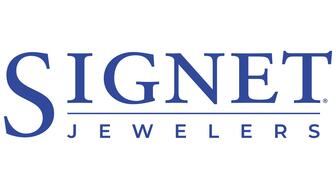
The addition of Yoakum, who will lead Kay and Peoples, was one of three executive appointments Signet announced Thursday.

As a leading global jewelry supplier, Rio Grande is rapidly expanding and developing new solutions to meet the needs of jewelers worldwide.
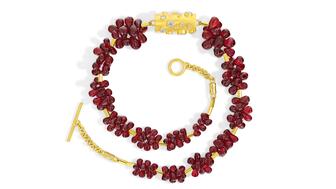
The necklace uses spinel drops to immortalize the moment Aphrodite’s tears mixed with her lover Adonis’ blood after he was fatally wounded.


The diamond miner and marketer warned last week that it expected to be in the red after significantly cutting prices in Q2.

Jewelers of America’s 35th annual design contest recognized creativity, artistry, style, and excellence.

The Seymour & Evelyn Holtzman Bench Scholarship from Jewelers of America returns for a second year.

Tratner succeeds Andie Weinman, who will begin stepping back from the buying group’s day-to-day operations.

The president made the announcement via Truth Social Wednesday, adding that India also will face a penalty for its dealings with Russia.
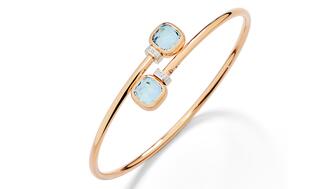
The luxury titan’s star brand Gucci continued to struggle amid a "tough" environment.

Its opening marks the completion of the retailer’s new 11,000-square-foot store in the Texas capital.

Respondents shared concerns about tariffs and commentary on the “Big Beautiful Bill.”

“Making a Killing in Diamonds” tells the story of Mimi Rosen, the disappearance of a scientist, and the murder of lab-grown diamond CEO.

Senior Editor Lenore Fedow learned a lot when she took a behind-the-scenes factory tour with the jewelry brand earlier this year.

The first-time exhibitors, set to debut at the New York City show, share a devotion to craftsmanship, storytelling, and material integrity.

The online auction house’s September sale will feature rough Brazilian emeralds of various qualities.

She’ll lead an executive committee consisting of President-Elect Bryan Moeller, Mitchell Clark, Bill Farmer, and Larry Rickert.

Announced Sunday, the deal will set the tax on goods imported into the United States from the European Union at 15 percent.

A new edition of the Italian brand’s “Ipanema” collection has debuted with gemstones that evoke Brazil’s breathtaking views.
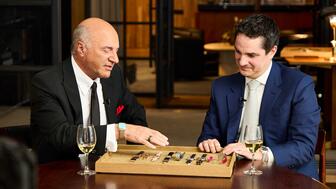
The retailer will refer its customers to WonderCare, founded by venture capitalist and watch collector Kevin O’Leary.

The jeweler’s largest store yet is set to open in Little Rock next fall.
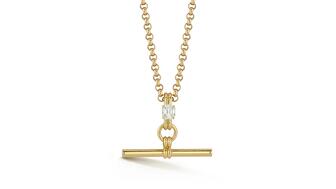
Anne Hathaway was seen wearing the toggle necklace three times while filming scenes for “The Devil Wears Prada 2.”

Jewellery & Gem World Hong Kong is scheduled for Sept. 15 to 21, and buyer pre-registration will be available until Sept. 7.
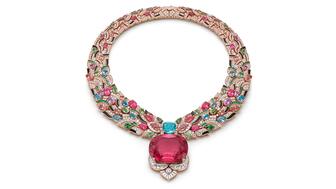
Renovations at Tiffany & Co. stores ate into profits in the company’s watch and jewelry division.

Mark and Candy Udell of London Jewelers will receive the honor at the 24th annual Gem Awards next March.

While struggles continue at the mining and trading end of the pipeline, consumer demand for diamond jewelry is holding steady.
























